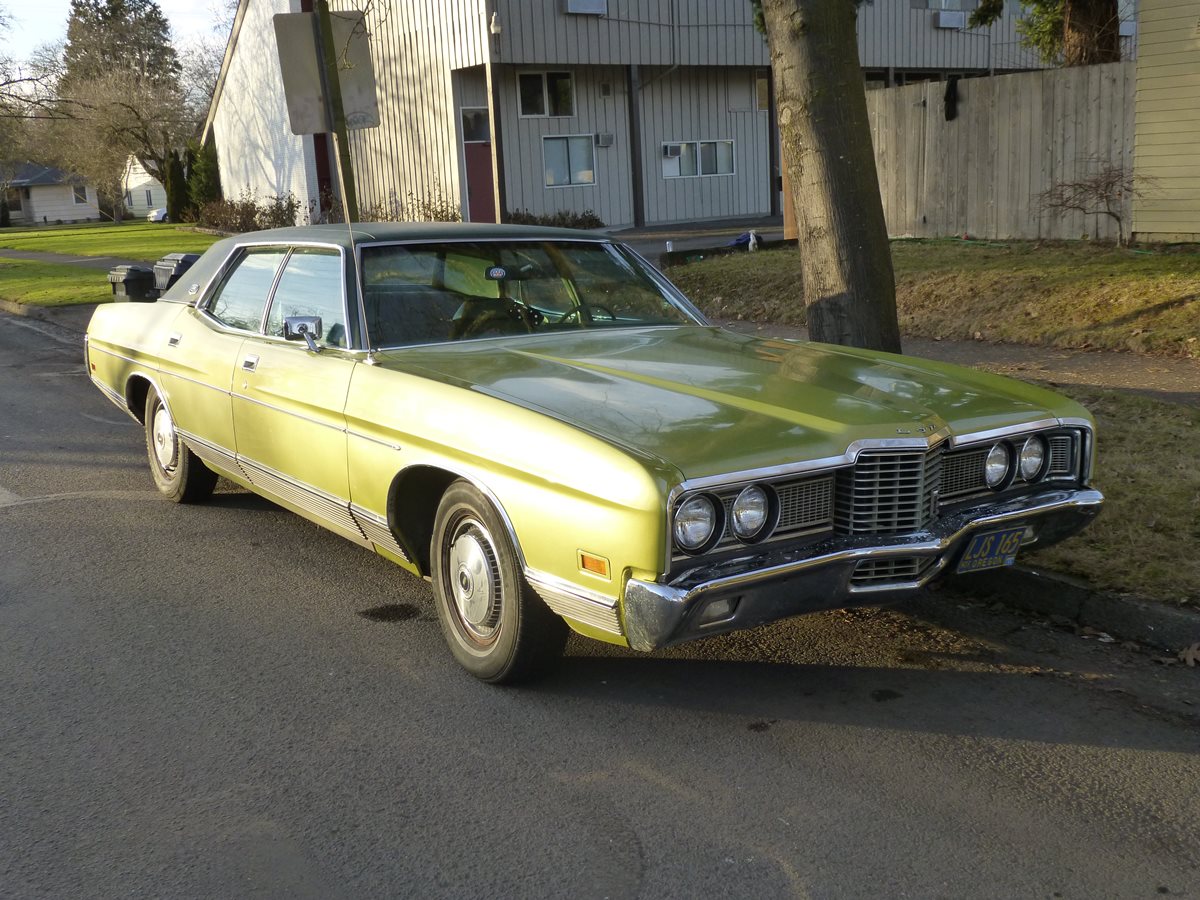Nothing in the combination of beige and brown that I had exudes "elegance"
Results 176 to 200 of 850
Thread: The worst car
-
05-04-2017, 02:15 PM #176I've concluded that DJSapp was never DJSapp, and Not DJSapp is also not DJSapp, so that means he's telling the truth now and he was lying before.
-
05-04-2017, 02:27 PM #177
-
05-04-2017, 02:29 PM #178
-
05-04-2017, 02:38 PM #179
 Funky But Chic
Funky But Chic
- Join Date
- Sep 2001
- Location
- The Cone of Uncertainty
- Posts
- 49,304

What?
-
05-04-2017, 02:39 PM #180
That thing is a real dog.
-
05-04-2017, 02:40 PM #181
 Funky But Chic
Funky But Chic
- Join Date
- Sep 2001
- Location
- The Cone of Uncertainty
- Posts
- 49,304
It's the wurst.
-
05-04-2017, 02:47 PM #182
That's being frank.
-
05-04-2017, 02:53 PM #183
I think it's a wiener.
-
05-04-2017, 02:58 PM #184
 skier
skier
- Join Date
- Dec 2002
- Location
- The Garden State
- Posts
- 4,907

Ding ding
-
05-04-2017, 03:04 PM #185
We had almost this exact sweet ride, mama hit a deer with it (deep south). It mighta been 3 minutes or so before a man stopped in a truck askin if we were gonna keep the deer and if we weren't couldn't he have it. to my 8 yr old memory just deer gore everywhere.
 "Can't you see..."
"Can't you see..."
-
05-04-2017, 03:10 PM #186
-
05-04-2017, 03:17 PM #187
-
05-04-2017, 03:37 PM #188
-
05-04-2017, 03:38 PM #189
 skier
skier
- Join Date
- Dec 2002
- Location
- The Garden State
- Posts
- 4,907
That ltd right there, talk about a sled. Had a similar galaxie 500 it took a licking and kept on ticking until one fateful night, long story.
I'll just leave this here...

Unfortunately that was from the front page of local paper a while back... Sold in lieu of towing charge shortly thereafter. Great car though. Loved the dual deep dish ashtrays across the front.
-
05-04-2017, 03:51 PM #190
-
05-04-2017, 03:57 PM #191
 Funky But Chic
Funky But Chic
- Join Date
- Sep 2001
- Location
- The Cone of Uncertainty
- Posts
- 49,304
-
05-04-2017, 03:58 PM #192
Was that when you caused a power outage?
-
05-04-2017, 04:03 PM #193
 skier
skier
- Join Date
- Dec 2002
- Location
- The Garden State
- Posts
- 4,907
Lessons learned - heinekens n Aguardiente session then rolling by buddies painting some stucco- bang - race car
-
05-04-2017, 04:05 PM #194
-
05-04-2017, 05:14 PM #195
 Funky But Chic
Funky But Chic
- Join Date
- Sep 2001
- Location
- The Cone of Uncertainty
- Posts
- 49,304
-
05-04-2017, 05:18 PM #196Unless your Dad was Walter Röhrl or Hannu Mikkola it's very unlikely.The introduction of Group B into the World Rally Championship in 1982 resulted from an evolution that was dictated by a general industry move from rear to front-wheel-drive cars, and it proved revolutionary, with seven victories. Contenders now had three classes from which to choose, Group N (standard production cars), Group A (modified production cars), and the almost immediately notorious and virtually unbridled Group B (modified sports cars).
Most notably, Group B allowed Audi to compete with its still-new Quattro all-wheel-drive system, which was an obvious boon on varied rally stage surfaces. The permanent all-wheel-drive system debuted in the Audi 80-based Quattro Coupe in 1980, and it quickly came to define the brand. Furthermore, FIA Group B homologation rules meant that only 200 road going examples of each car were necessary for sale to the public. These light regulations made for intensely competitive racing, since automakers were no longer required to build racing cars based on mass production models but vice-versa.
Audi campaigned what was essentially a Group 4 Quattro for the first couple of years, before engineers in Ingostadt, Germany, unleashed a wildly different model, which is now christened Sport Quattro. Although the Ur-Quattro (“original Quattro” to German enthusiasts) was a dominant force due to its permanent all-wheel-drive system, its heavy monocoque chassis, long wheelbase, and balance issues caused by its longitudinally mounted engine proved to be hindrances against such purpose-built racers as the Lancia 037.
Audi’s engineers were tasked with developing a new model that would address these concerns, and this was something they did in secret, far from the company’s road car operations. With its wheelbase shortened a meaningful 12.6 inches between the B- and C-pillars, the Sport Quattro was not only significantly shorter than the standard Quattro found in showrooms, but it’s steel monocoque shell, which was built off site by Baur, also featured numerous GRP and carbon-Kevlar panels to further trim weight. As such, there was very little shared with serial production Audis (although a more upright windshield that had been cribbed from the workaday Audi 80 alleviated early visibility concerns).
....
Audi built a mere 214 Sport Quattros,
-
05-04-2017, 05:20 PM #197
 Funky But Chic
Funky But Chic
- Join Date
- Sep 2001
- Location
- The Cone of Uncertainty
- Posts
- 49,304
Well there's 212 other ones.
Say 210 if you give them both a spare.
-
05-04-2017, 05:41 PM #198
-
05-04-2017, 06:00 PM #199
My stepdad had a 1980 Olds Delta 88. It was some kind of horrid beige color, like a watery butterscotch pudding, and the interior was 'camel' or some such shit. He bought it new on custom order, he was kind of an old school guy. It was hideous but really plush riding down the road.
-
05-04-2017, 06:34 PM #200


 Reply With Quote
Reply With Quote










Bookmarks